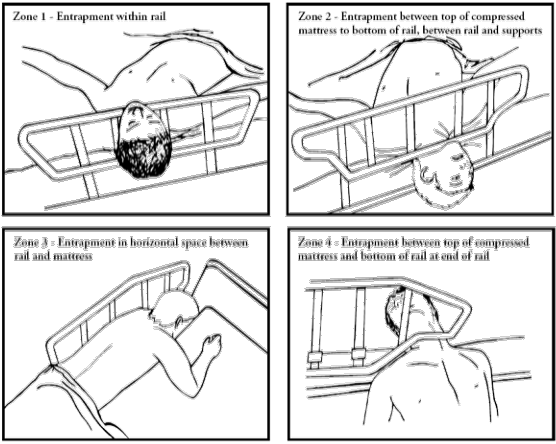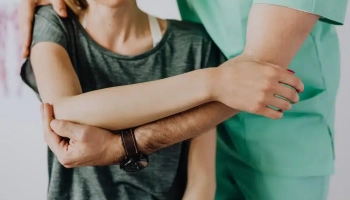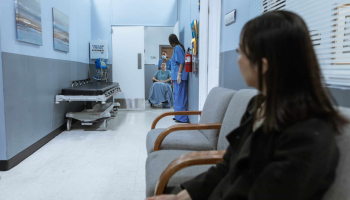
Bed Entrapment
What is hospital bed entrapment?
Bed entrapment is when a patient gets caught by the head, neck or chest between or about the tight spaces around the bed rails, mattress and head or foot boards of the medical bed. It can cause choking, pain, fatigue, serious injuries as the patient tries to get out of the entrapment. It can even result in death.
Statistics from the FDA shows that the organization received 691 entrapment reports between the years 1985 and 2006. Out of those entrapment reports, 431 people died, 120 got seriously injured while 158 were helped from entrapment. In mitigation of this risk, the FDA (Food and Drugs Administration) and HSBW (Hospital Bed Safety Workgroup) partnered and created a guide that helps caregivers, manufacturers and patients to keep entrapment at bay.
Bed entrapment could occur when the patient tries to quickly rush to the toilet, is in a fit of delirium, in pain, is confused or agitated and tosses and turns from one end of the bed to the other. Children on hospital beds could also get entrapped as they curiously try to explore and play around the bed rails.
7 bed zones with high risk of patient entrapment
According to the FDA and HSBW, here are the 7 risky zones of medical bed entrapment
- Within the rail
The open spaces between the rails have been found to entrap many patients.
Prevention
You can get a Posey Elastic Mesh Side Rail Protectors or a SkiL-Care Thru-View Vinyl Bed Rail Pad that cover up the spaces between the rails for those residents who are likely to get themselves entrapped.
- Gap between under rail and mattress
The gap under the rail and between the mattress could cause a head entrapment.
Prevention
You can get bed bumpers for adults that prevent you from rolling over to the space between mattress and edge of rail.
3. Gap between under the rail
The gap under the rail has been found to cause head entrapments
Prevention
You can install some bed bumpers
4. Gap under the rails at the end of the rails
Another gap where head, neck and chest entrapment could occur.
Prevention
Bed Bumpers would do
5.Between split bed rails
Beds with split rails on the same side of the bed with a gap between the two rails have also been known for entrapment of the neck, head or chest.
Prevention
Use a Bumper to prevent entrapment between the split bed rails.
6.Between end of bed rail and footboard or headboard
The gap between the end of the bed rail and the footboard or headboard can cause entrapment of the head.
Prevention
Prevent this form of entrapment from happening by installing some wedges.
7.Between headboard/footboard and mattress end
If there is a big space between the headboard or footboard and the end of the mattress, the risk of a head entrapment increases.
Prevention
Use mattress extenders to fill in this gap. You can get the Graham-Field 4INEXT Foam Mattress Extension from amazon.


Images Credit: Canada.ca
FDA and HSBW Recommendations
The FDA and HSBW medical bed safety guidelines against entrapment can be grouped into two:
1. Recommendations to manufacturers
2. Recommendations to home care givers
FDA medical bed dimensional recommendations for manufacturers
After the FDA and the HSBW found out these entrapment risk areas, they recommended the following dimensions to the manufacturers of bed parts.
| Area | FDA and HSBW dimensional recommendations |
| Space between the rails | Less than 120mm |
| Between the rail system and mattress | Less than 120mm |
| Under the rail, between rail supports or next to a single rail support | Less than 120mm |
| Under the rail, at the ends of the rail | Less than 60 mm and an angle greater than 60 degrees |
As a home care giver, kindly make sure that you use the above table to check whether your bed manufacturer are compliant. If they are not, avoid buying that bed.
FDA recommendations against entrapment to home care givers
The FDA and HSBW found that bed rails are the highest risk factors for bed entrapment. Though providing safety, side rails can also be agents of death and serious injuries in the case that your patient gets entrapment and it takes time to report or dislodge them.
They categorized patients into two: high risk and low risk patients depending on their condition and their susceptibility to getting injured incase a bed rail is removed from the picture
Low risk patients
Can move themselves to and from the bed to a wheelchair
Can go to and from the toilet on their own
Can use bed alarms with ease
Is not likely to fall from the bed
FDA labeled these patients and low risk in which case a bed rail should not be used.
High risk patients
High risk patients are those who:
Cannot move themselves to and from bed to a wheelchair
Cannot go to the toilet without assistance
Cannot use bed alarms
Are likely to fall from bed
For these group of patients, they are at high risk of injury if no bed rail is used. FDA recommends that you always use a bed rail for these people.
The question for low risk patients is what you would use now that a bed rail is not recommended? Well, there are other options that you can explore. They include:
Adjustable height low beds
With these types of beds, you should lower the bed to the possible minimum when the patient is going to sleep so that in case of a fall, they will not be injured that much.
Bolstered mattresses
Bolstered mattresses are such that there is a high rift between patient and the edge of the bed so the patient will not roll over to the edge of the bed and fall.
Bed alarms
Bed exit alarms are installed under the mattress or on the bed deck so that an alarm is raised anytime the patient tries to wake up from the bed or rolls.
Bed side mat
The bedside mat is placed next to the hospital bed so that even if the patient were to fall, they would fall on the mat and therefore this reduces the impact and thud of falling.
Trapezes
Trapezes help patients reposition themselves on the bed without having to turn. All they have to do is raise their hand, grab the trapeze and adjust themselves.
What to do in case of an entrapment
When an entrapment occurs, hosiped advises that you should act in haste before the patient suffocates or gets injured.
- Try to remove the patient from the entrapment by cutting the rails where the patient is entrapped using a hacksaw.
- Do a first aid on the patient including CPR, dressing any injured body parts.
- Report the incident to a doctor for the patient to be checked.







